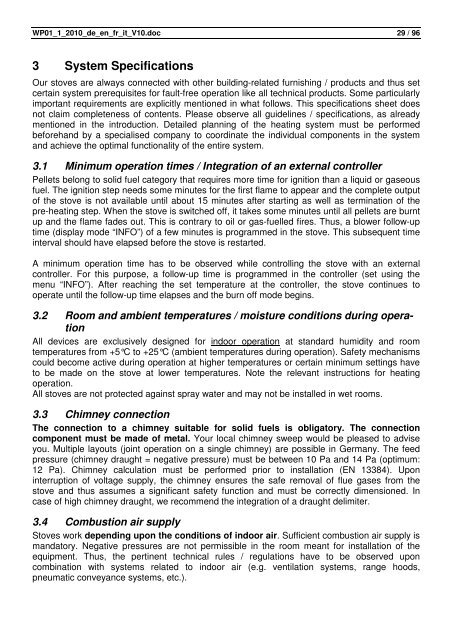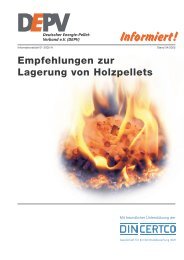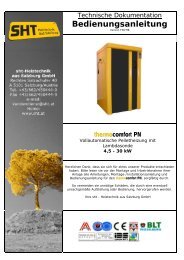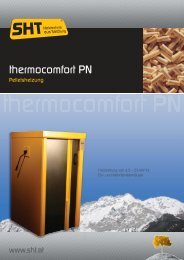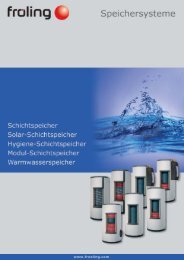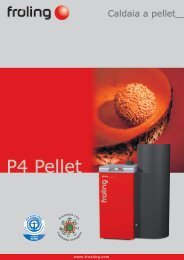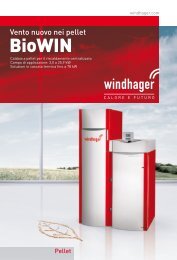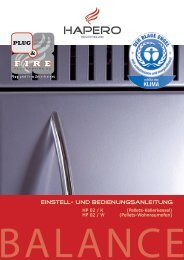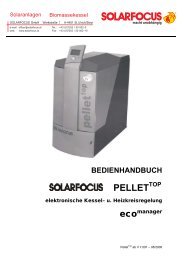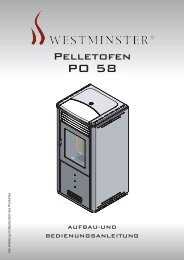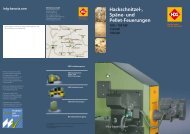Aufstell- und Bedienungsanleitung Pelletofen ... - Pelletshome.com
Aufstell- und Bedienungsanleitung Pelletofen ... - Pelletshome.com
Aufstell- und Bedienungsanleitung Pelletofen ... - Pelletshome.com
Create successful ePaper yourself
Turn your PDF publications into a flip-book with our unique Google optimized e-Paper software.
WP01_1_2010_de_en_fr_it_V10.doc 29 / 96<br />
3 System Specifications<br />
Our stoves are always connected with other building-related furnishing / products and thus set<br />
certain system prerequisites for fault-free operation like all technical products. Some particularly<br />
important requirements are explicitly mentioned in what follows. This specifications sheet does<br />
not claim <strong>com</strong>pleteness of contents. Please observe all guidelines / specifications, as already<br />
mentioned in the introduction. Detailed planning of the heating system must be performed<br />
beforehand by a specialised <strong>com</strong>pany to coordinate the individual <strong>com</strong>ponents in the system<br />
and achieve the optimal functionality of the entire system.<br />
3.1 Minimum operation times / Integration of an external controller<br />
Pellets belong to solid fuel category that requires more time for ignition than a liquid or gaseous<br />
fuel. The ignition step needs some minutes for the first flame to appear and the <strong>com</strong>plete output<br />
of the stove is not available until about 15 minutes after starting as well as termination of the<br />
pre-heating step. When the stove is switched off, it takes some minutes until all pellets are burnt<br />
up and the flame fades out. This is contrary to oil or gas-fuelled fires. Thus, a blower follow-up<br />
time (display mode “INFO”) of a few minutes is programmed in the stove. This subsequent time<br />
interval should have elapsed before the stove is restarted.<br />
A minimum operation time has to be observed while controlling the stove with an external<br />
controller. For this purpose, a follow-up time is programmed in the controller (set using the<br />
menu “INFO”). After reaching the set temperature at the controller, the stove continues to<br />
operate until the follow-up time elapses and the burn off mode begins.<br />
3.2 Room and ambient temperatures / moisture conditions during operation<br />
All devices are exclusively designed for indoor operation at standard humidity and room<br />
temperatures from +5°C to +25°C (ambient temperatures during operation). Safety mechanisms<br />
could be<strong>com</strong>e active during operation at higher temperatures or certain minimum settings have<br />
to be made on the stove at lower temperatures. Note the relevant instructions for heating<br />
operation.<br />
All stoves are not protected against spray water and may not be installed in wet rooms.<br />
3.3 Chimney connection<br />
The connection to a chimney suitable for solid fuels is obligatory. The connection<br />
<strong>com</strong>ponent must be made of metal. Your local chimney sweep would be pleased to advise<br />
you. Multiple layouts (joint operation on a single chimney) are possible in Germany. The feed<br />
pressure (chimney draught = negative pressure) must be between 10 Pa and 14 Pa (optimum:<br />
12 Pa). Chimney calculation must be performed prior to installation (EN 13384). Upon<br />
interruption of voltage supply, the chimney ensures the safe removal of flue gases from the<br />
stove and thus assumes a significant safety function and must be correctly dimensioned. In<br />
case of high chimney draught, we re<strong>com</strong>mend the integration of a draught delimiter.<br />
3.4 Combustion air supply<br />
Stoves work depending upon the conditions of indoor air. Sufficient <strong>com</strong>bustion air supply is<br />
mandatory. Negative pressures are not permissible in the room meant for installation of the<br />
equipment. Thus, the pertinent technical rules / regulations have to be observed upon<br />
<strong>com</strong>bination with systems related to indoor air (e.g. ventilation systems, range hoods,<br />
pneumatic conveyance systems, etc.).


